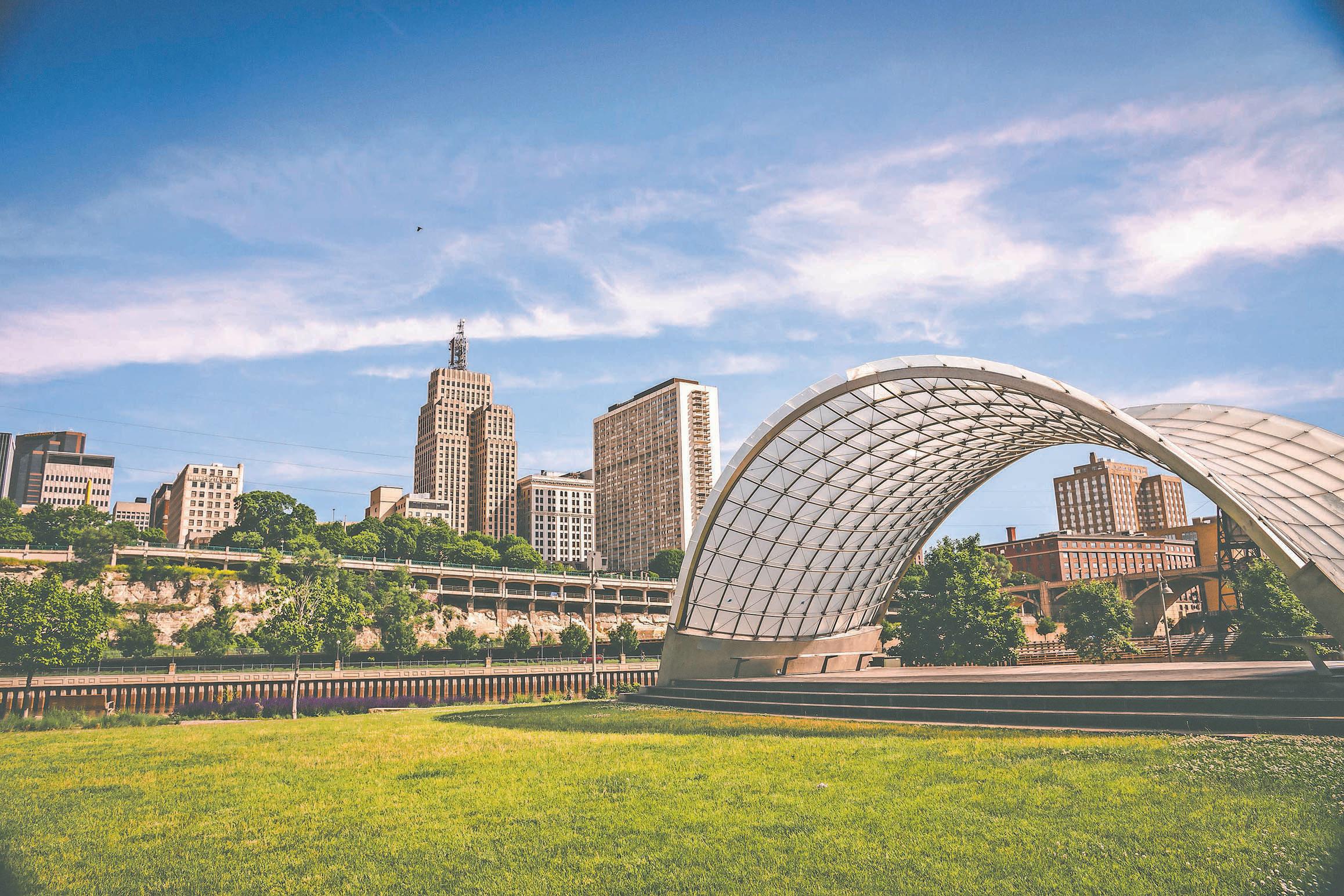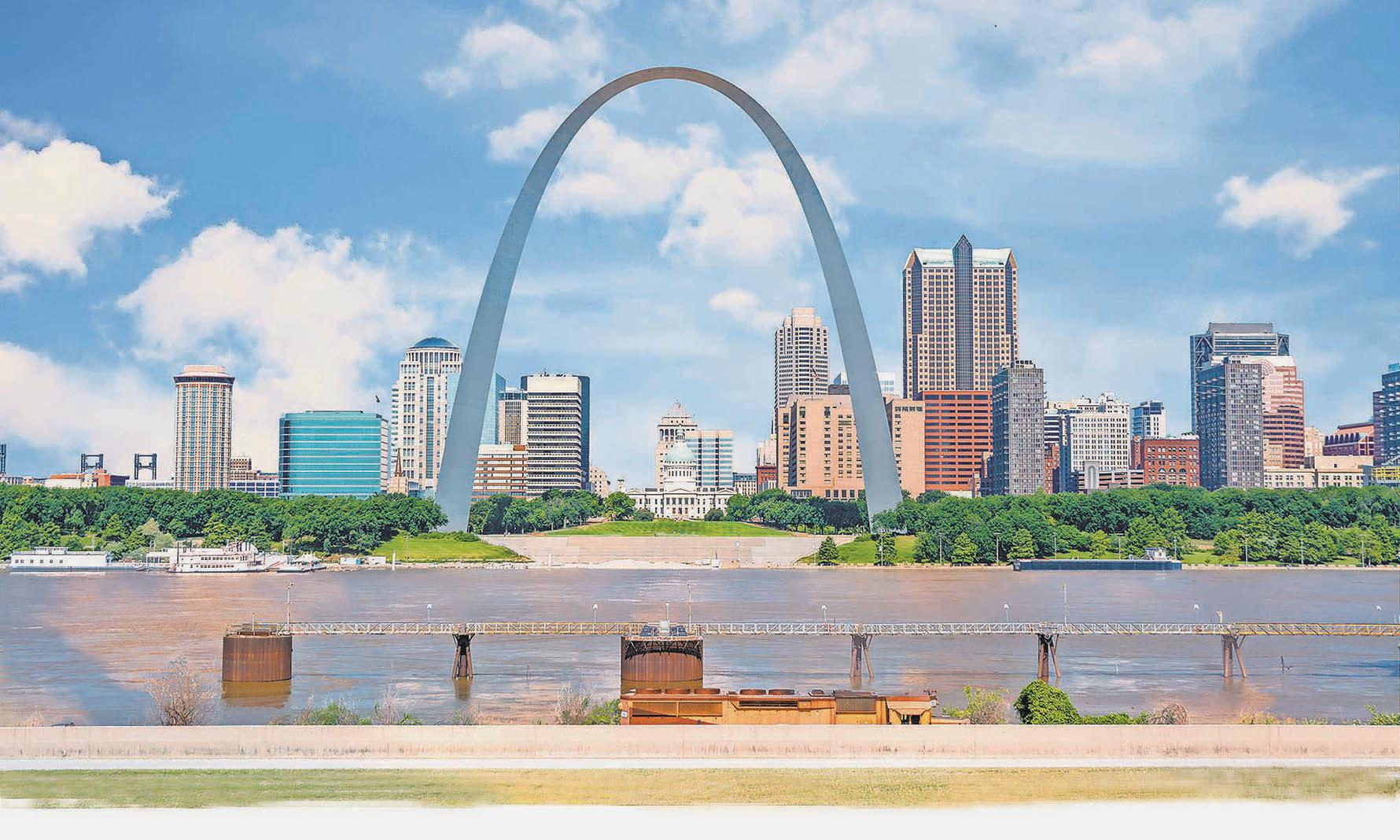
7 minute read
GREEN LIVING
CLOSE TO HOME
These cities get high marks for environmental appeal
Advertisement
USATODAYSPECIALEDITION
By Michelle Washington
HERE ARE MANY WAYS to
Tlive a more sustainable existence: taking public transportation instead of driving; buying reusable products to reduce landfill waste; planting trees to help clean the air. But where you live can also play a big role in your impact on the environment.
Large amounts of park space, a low percentage of driving commuters, access to farmers markets and minimal waste per capita are traits green cities have in common. What are the most eco-friendly cities in the U.S.? It depends on who you ask.
In 2020, career research company Zippia compared 99 cities based on their walkability, car ownership, commute length, tons of waste per person and acres of parkland per 1,000 people. The company used data from the U.S. Census, Save on Energy and the Trust for Public Land to compile its rankings.
Landing in the No. 1 spot is St. Paul, Minn., a port city located on the Mississippi River.
“Minnesotans are some of the least wasteful people in the United States — only tossing out 12 tons of waste per person. That’s about 26 less tons than everyone in Nevada,” Zippia says in its report. “St. Paul may not be the most walkable city, with only some errands being walkable. However, average commutes are short, making St. Paul the greenest city in the U.S.”
Home to more than 308,000 people , St. Paul ranked high for its low waste per person and residents’ access to parkland. Chief Resilience Officer Russ Stark says the city, of which 16.6 percent is parkland, has emphasized access to green space with an initiative that has resulted in 95 percent of residents living within a 10-minute walk to a park — and efforts are underway to reach 100 percent.
Raspberry Island on the Mississippi River in St. Paul, Minn.
VISIT SAINT PAUL
CONTINUED
USATODAYSPECIALEDITION

Making streets safer for residents to bike and walk is an active goal for city planners, says Stark. “We are making improvements to infrastructure to make it easier for people to move around St. Paul without a car,” he says. “In 2020, we built out 20 new miles of protected bikeways. That’s key because it helps people adopt biking not only for recreation but for transportation.”
Other top city priorities include a sustainable building policy that calls for new developments that receive public financing to meet higher standards for energy efficiency and green design, and completion of an electric-car-sharing project that will offer better transportation access for residents .
Earning the top spot for the city’s environmental appeal is not surprising to Stark. “We are in Minnesota, the ‘Land of 10,000 Lakes,’ where I think the presence of all that water and outdoors is a constant dating back to our indigenous and tribal communities who have been here for thousands of years,” he says. “The way they valued this land; combine that with our relatively cold climate that we’re known for ... folks here need to be prepared for whatever’s happening climatologically, and I think that probably has something to do with why people here tend to be pretty conscious about sustainability.”
San Diego ranked No. 5, with Zippia highlighting its low car ownership rate (56.6 percent) and high amount of parkland per capita (34.9 acres). Mayor Todd Gloria says sustainability has been a long-standing priority. He points to the city’s climate action plan, which focuses on reducing greenhouse gas emissions, utilizing renewable energy resources, reducing landfill waste and more.
“Quality of life is one of the things San Diegans cherish the most,” says Gloria of the city’s 1.4 million residents . “Ties to sustainability, climate and the environment are built into our DNA as a people.”
San Diego also landed in the No. 2 spot on WalletHub’s greenest cities list in 2019 . Rounding out the top five were San Francisco (No. 1); Irvine, Calif. (No. 3); Washington, D.C. (No. 4); and San Jose, Calif. (No. 5). To determine the cities promoting an environmentally friendly lifestyle, the personal finance website compared the 100 largest cities across 28 key “green” indicators and four major areas including environment, transportation, energy sources, and lifestyle and policy .
San Diego ranked high on the Zippia and WalletHub reports for transportation, including commuting, bike lanes, walkability and low car ownership. Gloria welcomes the praise, but says there is room for improvement.
“San Diego can’t just get by on its good looks,” says Gloria. “We need to do more. We are working to let go of a 20th-century transportation plan and look forward to a 21st-century plan. That includes electric buses, biking year-round and providing infrastructure that gives San Diegans real choices in that.”

GOOD TO BE GREEN
Being environmentally focused and helping to save the planet are beneficial for cities and residents, says Raphael Calel, assistant professor at the McCourt School of Public Policy at Georgetown University in Washington, D.C. , who served as an expert panelist for WalletHub’s report . “The biggest benefits from going green are improvements to health,” Calel says in the report. “Cleaner air and water result in substantial health gains. This allows people to be more productive and lowers health care spending. Better air and water quality and more green spaces also generally make people happier and more satisfied with their communities.” BUSINESS BENEFITS
WalletHub also asked experts to weigh in on the advantages of cities being eco-friendly when it comes to attracting green-minded businesses. Cutting-edge companies are more likely to operate in places that have policies that mesh with their business practices, says Robin Rothfeder, assistant professor of natural resource planning at the University of Wisconsin-Stevens Point .
“In the case of renewable energy, state and local governments can offer subsidies, tax rebates or other incentives to residents and businesses; this in turn creates a more robust market base for renewable companies,” Rothfeder told WalletHub . “ It is also the case that green investments lead to higher quality of life, which helps to attract and retain the labor force needed to operate green businesses; mixed use developments, transit-oriented developments, active transportation infrastructure, high quality public open space and other strategies create a context for green businesses and their employees to thrive.”
Here’s how Zippia ranked other top cities:
CLOSE TO HOME
USATODAYSPECIALEDITION
Honolulu, Hawaii, skyline along Waikiki Beach
GETTY IMAGES
HONOLULU (NO. 2) Walkability score (out of 100): 65 Tons of waste per person: 15.4 Parkland per 1,000 people: 34.1 acres Average commute: 29.1 minutes Car ownership: 69.7 percent “Honolulu is the second greenest city in the U.S. Only 69 percent of Honolulu residents own a car. This is particularly impressive because Honolulu is not super walkable. Many residents take advantage of a good public transport system cutting down their emissions. Combine that with the plentiful parks and beautifully preserved nature, and Honolulu is a pretty green city.”
USATODAYSPECIALEDITION

ST. LOUIS (NO. 3) Walkability score (out of 100): 65 Tons of waste per person: 22.3 Parkland per 1,000 people: 11.7 acres Average commute: 20.1 minutes Car ownership: 72.4 percent “St. Louis is known for their impressive parks, with Forest Park being the crown jewel of their collection. But they should also be known for their low amount of waste per person. Residents of the arch city have some of the shortest commutes of major metro areas. That’s pretty environmentally friendly.”

MADISON, WIS. (NO. 4) Walkability score (out of 100): 48 Tons of waste per person: 26 Parkland per 1,000 people: 26.1 acres Average commute: 20.2 minutes Car ownership: 75.5 percent “Madison, Wisconsin , is the fourth greenest city in the U.S. Madison residents could own less cars and have a bit too much Midwestern sprawl to be higher on the list. But all things considered, Madison is doing pretty good.” CLOSE TO HOME

USATODAYSPECIALEDITION
The Gateway Arch in St. Louis
Madison, Wis., Capitol building and skyline
GETTY IMAGES
USATODAYSPECIALEDITION












